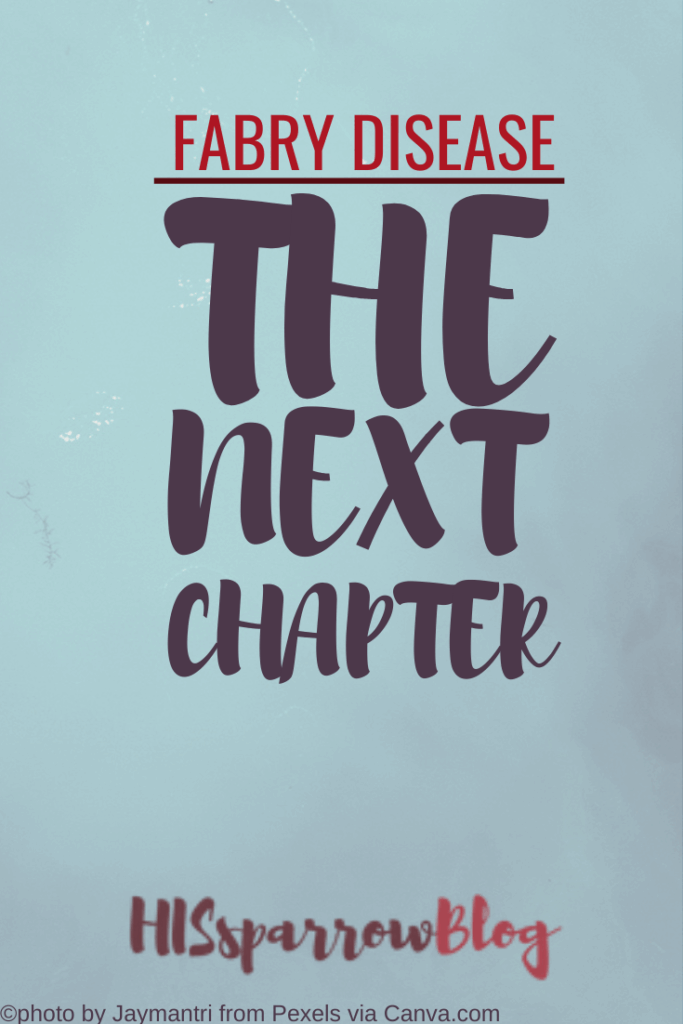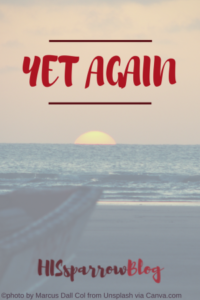Fabry disease has shaped my family’s journey, from early diagnosis to the first treatment ever to now. Today I’ll reflect on that journey and talk about the next chapter.

Several years ago I wrote part of my story with Fabry disease. I really can’t believe it’s been that long, but you know how it goes. Lately, there have been some changes—or maybe I should say updates—in my chronic illness journey I wanted to share.
Fabry disease? Or death sentence?
When I was about five, thanks to my routine eye appointment and an educated ophthalmologist, my family learned that my dad, my uncle, his daughter, and I had the rare disease Fabry (fah-bray).
Fabry disease is a genetic disorder caused by insufficient production of a certain enzyme (alpha-galactosidase A) to break down a certain protein (GL-3), which causes a build-up of the protein in blood vessels and organs. This build-up can cause all kinds of symptoms from mild (like gastrointestinal issues, tinnitus, and pain in the hands and feet) to not-so-mild (like kidney failure, heart attacks, and strokes).
Have you ever heard something so many times you can picture it in your head even though you weren’t there or were too little to remember? That was one of those times for me. The diagnosis was devastating for my family.
That diagnosis was essentially a death sentence since most Fabry males had a lifespan of about forty at the time—forty—and there was no treatment let alone cure. All doctors could do then was limp along treating each problem as it came up, and there were big problems pretty much immediately.
But there’s hope.
About the time I was in high school, we learned there was a treatment in the works. It was an infusion therapy where the enzyme was given by IV every two weeks known as an enzyme replacement therapy (ERT). But no one was sure how expensive it’d be, if insurance would cover it, and where it could be administered.
There was talk that patients could only receive it at Mount Sinai, New York. Totally not feasible for a middle class family from Alabama. Then we thought maybe Atlanta, which might have been doable, if difficult, two hours away.
But in the end we were able to receive treatment in the closest town and although it was very expensive, insurance picked it up. My dad started treatment in 2003 and I followed in 2004—almost as soon as it was made available.
A step at a time as they say.
I’ve been thinking on these things a lot lately. Pretty much this whole year. I can’t help but see how each step has led to the next. The research by doctors and companies and the participation of patients in studies. New treatments that pave the way for other treatments and discoveries.
I can’t really articulate just how much a blessing ERT has been. I fully believe that my dad lived close to twenty years longer than he might’ve without it. And it’s been a huge step in the Fabry journey in not only extending our lives but improving our quality of life.
I really can’t express how grateful I am. And now I’ve had a chance to participate in the next step. After being on ERT fourteen years, I’ve been spared a lot of damage to my body.
In another article, I mentioned there were several new treatments in the works with one or two even being oral medication. One of those was approved in 2018, but it works for some Fabry patients who have a particular type of Fabry. This is so awesome. But it doesn’t work for mine.
I’m participating in a study for an oral medication that will hopefully work for us all. Can you believe that!? Now this is a trial, so there’s still a possibility that it might not be approved or the company decides to cancel, but it’s a huge step for us.
I can’t help but think of my dad a lot lately. I couldn’t even tell you how many studies he participated in with no hope of seeing the benefits of them himself. He allowed himself to be poked and stabbed and biopsied in the hopes that I, and any children I might have, would reap the benefits.
One day.
That day always seemed so far away before, but it’s here now, and one day I pray the next generation will have a cure thanks to all those who’ve gone before.
I’m so thankful for where my life has fallen in the Fabry story: I can appreciate the past frustration and hopelessness of those with no treatment, while being able to look to the future with hope.
*** This post was revised from the archives. Check out the original here. ***
More reading
- Chronic Illness: My Story from HISsparrowBlog
- National Fabry Disease Foundation
- Fabry Disease News
- Fabry Support and Information Group (FSIG)
- ReThink Fabry (Resources and Support)
- Mindfully Rare (Mental Health Support)

I frequently link up with the following: Grace & Truth with Embracing the Unexpected, Tell His Story with Jeanne Takenaka, Let’s Have Coffee with Joanne Viola, and Blessing Bloggers with Deb Wolf.





I had never heard of this disease before reading some of your earlier posts about it. I imagine it takes a lot of courage to undergo a trial for a new treatment or medication, not knowing what the side effects might be. I’m thankful for the brave souls who do. It’s wonderful that your father did so, knowing it might not benefit him, but might benefit you and others who came after him. I’m so grateful you live in such a time that there are treatments available!
Having met your mother in 1992 when we began working together, I somewhat experienced this journey with your daddy and you but regretfully, I really never knew the full extent of what you all went through. I remember your dad receiving dialysis and experiencing tremendous chills afterwards because he would make his way upstairs where your mom and I worked, and he would lie on one of the surgeon’s couches in their private office until he recovered enough to drive home. Your mother is a woman of tremendous faith and she gained her strength from the Lord to go through this ordeal because she loves her family unconditionally. Thank you, Ashley, for sharing your story and giving so much so others who follow may have a somewhat less difficult life with this diagnosis. God bless you.